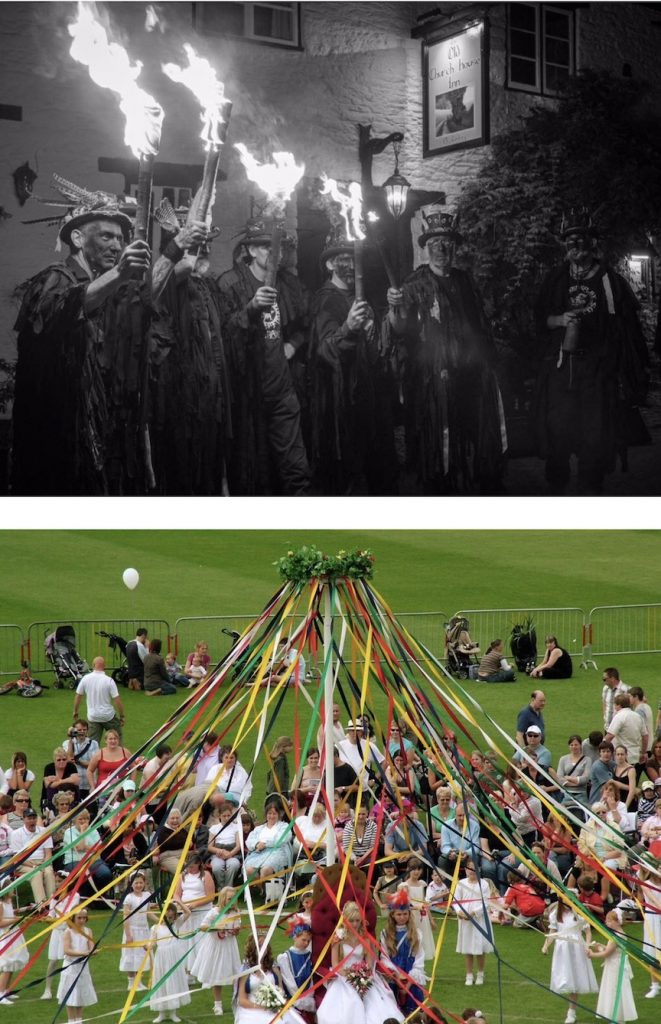For centuries May Day and the turning of the year from the dark half to the warmer light half was celebrated all over the country in many colourful ways. Usually involving music and dance, many of these traditions used symbols of the new greenery and flowers that appeared at this time of year; others more clearly alluded to death and rebirth and the cycle of life that mirrors the yearly cycle of the seasons.
It’s origins include:

- Floralia: the festival of Flora the Roman goddess of flowers, held from 27 April – 3 May.
- Walpurgus Night: celebrated across northern and central Europe on Saint Walpurga’s Eve to protect people from witchcraft by lighting bonfires on Saint Walpurga’s Eve to ward of evil spirits and witches.
- Beltane is the Gaelic festival held on 1st May to bless and protect cattle, crops and people, and to encourage growth. It involved bonfires, properties decorated with May flowers and the creation of a May Bush decorated with flowers, ribbons, bright shells and rushlights.
- Crowning of Mary: Since the 18th century, many Roman Catholics have observed May Day by devotions to the Virgin Mary with her statues often crowned with flowers. This seems to be a Christian adoption off the much earlier tradition of the May Queen which itself may derive form Floralia (above).
- May Fairs have been held across Europe since time immemorial, often involving the crowning of a flower bedecked May Queen (the human replica of Flora), usually a young maiden and so perhaps a reflection of the birth of summer.
- Maypole dancing is probably the best known tradition involving children and the tradition is continued here in The Christchurch School May Fair every year.
- In some parts of Britain, May 1st is called Garland Day.
- Well dressing, also known as well flowering, is a tradition practised in some parts of rural England in which wells, springs and other water sources are decorated with designs created from flower petals. Although not a May Day activity it usually starts in May and once again flowery decoration is the norm.
It is a day of transition with an interesting co-incidence of beginnings (involving birth and flowers) and ends (involving death and fires).
More recently May Day has become a workers’ public holiday and has been revived by pagans as a new festival.
Our Green Man Festival isn’t a revival or reconstruction of any particular lost tradition, but a new event drawing on some of these older customs and including many current ones. The result is a modern May Day celebration for the current times but still enjoying the spectacle and energy of those older festivities.